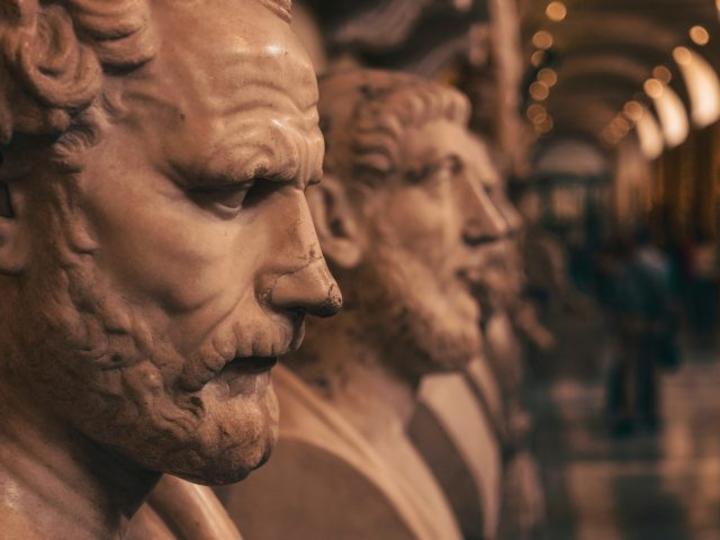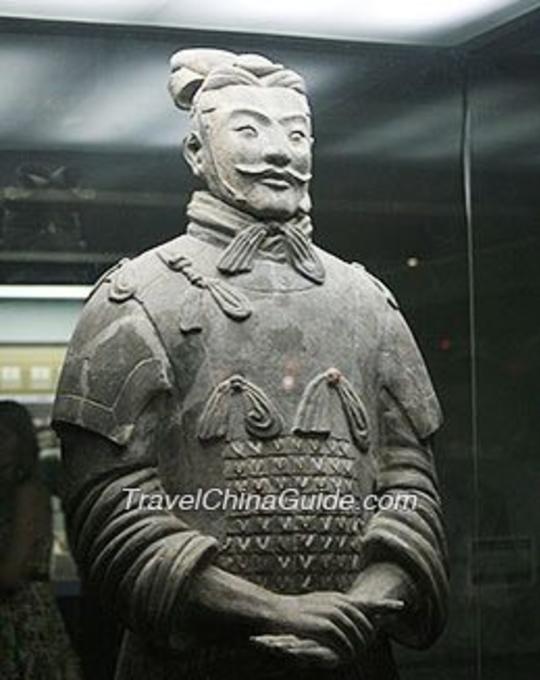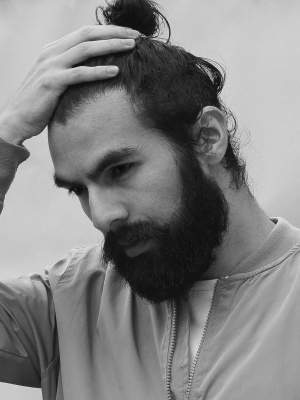Since there is hardly any documentation about beard-wearing men in prehistoric times due to a lack of writing, we will start in this article with antiquity. You will briefly learn the history of wearing the beard from ancient times to the present day.
Content:- History of the Beard in Antiquity (3000 BC)
- History of the Beard in the Middle Ages (500-1500)
- History of the Beard in the Renaissance (1400-1700)
- History of the Beard in the ‘New Age’ (17th century to date)
- Facts about beard growth
The origin + function of the beard
Throughout the history of mankind, beards have had different functions.
When the Earth had a colder climate than it does now, body and facial hair were meant to provide extra warmth.
A beard also appeared a bit more violent and could also be used to intimidate local tribes.
Nowadays, beards are grown as a status symbol, fashion statement, and to radiate masculinity.
The history of the world is indicated in periods.
A period is a certain time in which a civilization undergoes a major change, such as the learning and application of writing, the union of large tracts of land, or inventions of innovative technology.
These periods are prehistory (prehistoric times), antiquity, the Middle Ages, the Renaissance, and the modern era.
The beard was worn through all periods and thus had different functions.

Ancient times
Ancient men grew beards because of the warmth, a certain intimidation factor, and protection.
It protected their mouths from dirt and in some parts of the world from the bright sun when human skin was less resistant to UV rays.
Growing facial hair creates an optically stronger jawline, which in turn creates a deterrent look.
Phenicia
Phenicia is a region on the Mediterranean Sea, which is now Lebanon. The first discoveries have been made in this area, which means that it can be said with certainty that the ancient people devoted time and attention to their beards.
The sarcophagus (stone coffin) depicts a beard style that runs from ear to ear and covers the cheeks and chin, i.e. a full beard style.
Excavated Sarcophagus. Source: Project Gutenberg

Mesopotamia
The men from Mesopotamia (Two-stream country, present-day Iraq) took great care of their facial hair.
They used beard oil to care for the hair and jewelry such as braided rings to make their beards stand out. The beard style was long and full.
→ Read more: The best beard oil of today (not Mesopotamian era)

Mask from the Akkadian empire. Source: Wikipedia
Egypt
Around 3000 years before Christ, the Egyptians already used ‘beards’ made of metal and gold, as a kind of mask.
This was done by kings and rulers and served as a status symbol and token of appreciation towards the gods.
Men of regular rank in society recognized the gods by coloring their beards, but with cheaper means.
India
In India, beards were long grown and worn and symbolized wisdom and honor.
The beard was well-groomed. And, in fact, as a punishment for adultery, the beard was cut off in public.
Persia
Moments later, the Persian people are known for having started grooming and decorating their beards at an early stage.
They used natural oils from plants and made beads and necklaces, especially for the beard.
China
In China, men did not shave from the belief that the human body should not be modified because it is a gift from the parents. Soldiers of the Terracotta Army, for example, had a mustache and goatee.

Greece
The Greeks used their beards as a sign of honor and courage, the beard even having an elevated status and being frequently mentioned in scriptures.
The Greeks only shaved their beards during periods of mourning or when carrying out a punishment. The Spartans did this by cutting off large pieces of the beard.
Macedonia
The shaving of the cheeks did not become a custom until around 350 BC. This was because Alexander the Great stated that soldiers were not allowed to wear beards.
He did this for practical reasons because enemy soldiers could grab the hair and possibly gain a small lead on the battlefield.
This custom was quickly adopted by the rest of the empire. This resulted in faces on the coins of kings suddenly being depicted without a beard.
The men who held tight when wearing their beards were philosophers.

Coin with Alexander the Great without a beard
Rome
Lucius Tarquinius encouraged the use of the first ‘razors’ during his reign of Rome (535 BC), thereby suddenly improving the hygiene of the beard-wearing man.
Although complete shaving was still not fully accepted, the first barbershops were established on the main streets of ancient Rome.
These shops were usually used by men who were not slave drivers because otherwise, a slave would do the shaving of course.
A few decades later, shaving was accepted in ancient Rome. The well-known philosophers and their typical busts, however, are almost all still depicted with a beard.
The Saxons were also beard-wearers, up to the 7th century.
Christianity enacted a law declaring that men should shave.
The Templars apparently disagreed, and when they started their crusades the beard was seen again among the fighting knights.
There was a free expression of ‘style’, as beards, mustaches, and haircuts were all allowed for hundreds of years to come.

The Middle Ages
During the Middle Ages, a beard was seen as brave and masculine.
Touching someone else’s beard was therefore seen as treason and reason enough to challenge a duel between the two men.
Most nobles and soldiers thus wore beards, while the unmarried priests were shaved clean.
A little later, around 1600, the Flemish painter Van Dyck made paintings in which he painted blue blood with beards.
His own beard style is now known as the Van Dyke. The men of this time already used pomade, grease, and brushes to style their hair.
→ Read more: The most popular beard styles of the moment + lookbooks
Renaissance
Chinese emperors (1300-1700) are almost all depicted with beards. This is because they still held to the ideal of Confucius (see China in ancient times). The beard style was full and long.

It was only at the beginning of the 17th century that a change took place: the length of the beard became shorter.
In 1698, Peter I of Russia even introduced a law that taxed bearded men.
In this way, he wanted to ensure that Russian culture was more in line with Western Europe.
19th century
The 19th century had two struggles when it comes to facial hair: clean-shaven and lots of beards.
The difference between high status and the regular man became less and you could actually do what you liked most at the time.
What was a striking trend is that famous men such as Alexander III of Russia, Napoleon III, Charles Dickens, and Garibaldi wore a beard with pride.

Giuseppe Garibaldi, founder of the Garibaldi beard style
20th century
Its popularity declined in the early 20th century. Around the 1920s and 1930s, men wore a less noticeable form of facial hair, namely a mustache or goatee. Well-known faces are Hitler, Stalin, and Einstein.
From 1920 the marketing landscape in America changed, causing many companies to jump into the possibility of selling their products to the masses.
One of the first major ad campaigns was from Gillette, among others, which greatly increased razor sales.
The result was an even further decline in the popularity of the beard and from 1920 to the 1960s a beard was hardly worn anymore.

1930 Gillette ad
Wearing a beard did not become more popular again until the 1960s when groups such as The Beatles and the Beach Boys adopted the full beard style.
Over time, certain beard models are made popular. Abraham Lincoln made the ‘chin curtain’ popular in the early 19th century.
Henry Thoreau the chin strap. Wolverine de Mutton Chops and in 2017 that is the Bandholz by Eric Bandholz.
Today, about 55% of all men worldwide wear a face mask.
Facts From History
- Beards in prehistoric times were seen as honorable and the beard was shaved as punishment
- In the Middle Ages, touching someone else’s beard was seen as aggressive and provocative, prompting a duel
- President Lincoln’s beard style was a great influence on the appearance of beards and has been responsible for the popularity of the beard today.
- 98% of lumberjacks wear a beard


